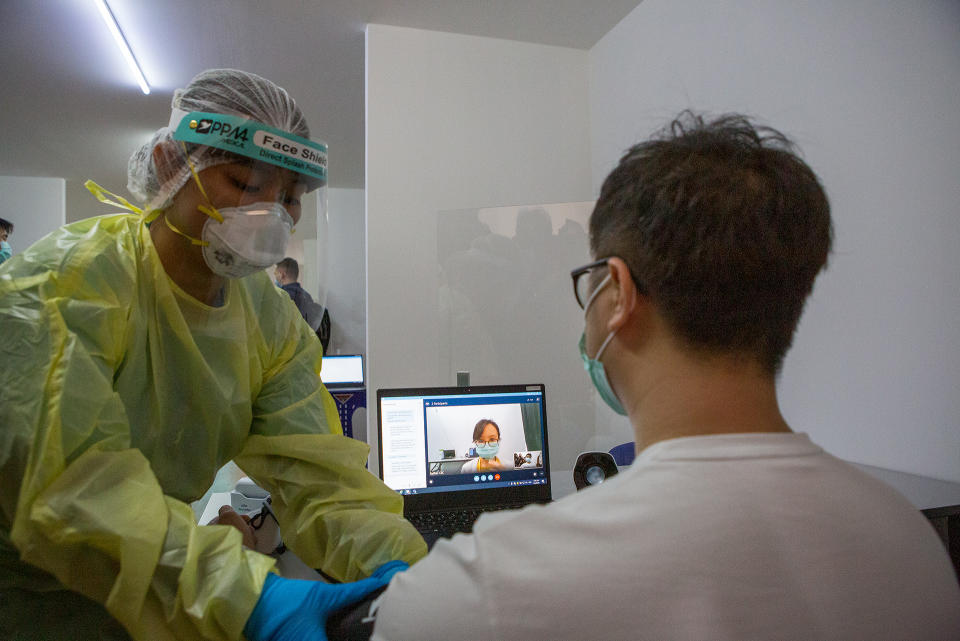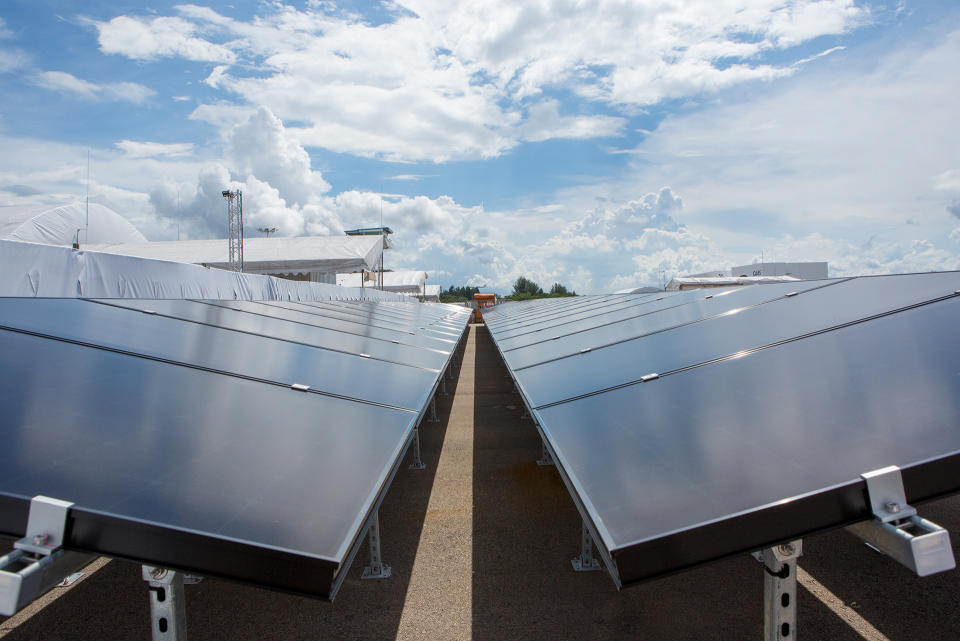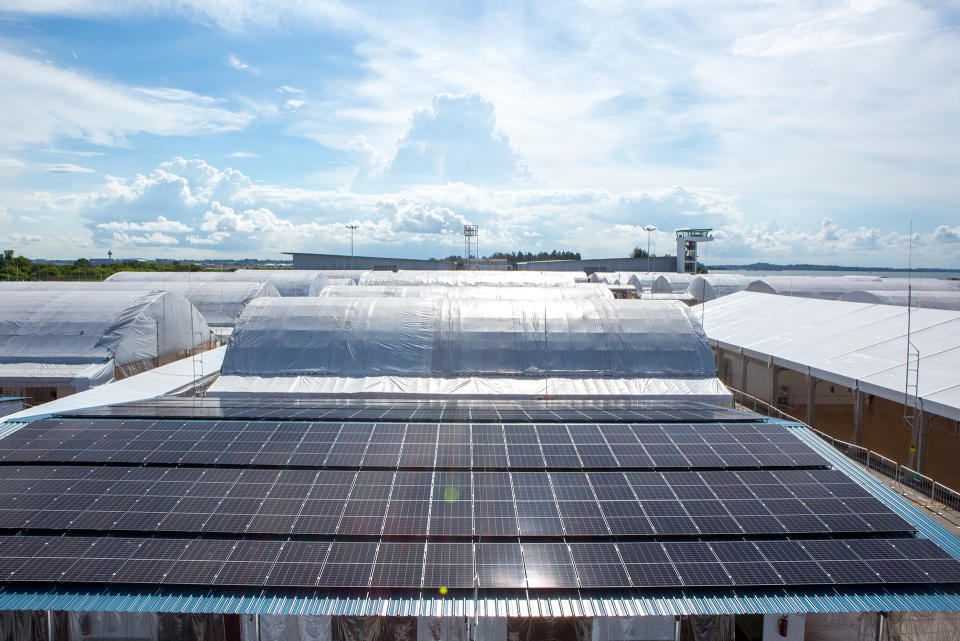COVID-19: More tech tools at expanded Changi Exhibition Centre patient facility

SINGAPORE — A slew of technological solutions are being deployed to help with operations at the newly built community recovery facility (CRF) for COVID-19 patients at the Changi Exhibition Centre (CEC).
These tools include solar farms to help meet power needs, systems for geo-fencing and security, as well as robots to assist with food distribution and disinfection, all of which were on display during a media tour of the site on Wednesday (3 June).
The outdoor CRF, which can accommodate up to 1,700 patients, is built in addition to the existing indoor community care facility (CCF) at the CEC, which can take in 2,700 patients. The patients are migrant workers who have tested positive for COVID-19.
Those arriving at the CEC are first treated and monitored at the CCF, which is meant for recovering and early COVID-19 patients with mild or no symptoms and who have lower risk factors.
Patients who remain well at the end of their 14th day of illness and do not require medical care are then transferred to the CRF, where they will stay until they are discharged.
“From the patients’ perspective, they will have been staying in the indoor facility for two weeks or so. Now they will have the opportunity to stay in an outdoor facility for another week before they’re discharged from the CEC,” said The Chevrons general manager Tan Chong Boon, who is also on the CEC facility’s operations committee.
The Chevrons is one of nine Ministry of Defence (Mindef) affiliated organisations that help to set up the CEC facility, which is managed by Mandarin Oriental Singapore and has its healthcare needs provided by Raffles Medical Group. While the CCF measures 33,000 sq m in area, the CRF portion measures 40,000 sq m in size.


Technological solutions
Just as the CCF was previously reported to be making use of robots to assist in patient care and other operations, technological solutions are also being applied at the CRF.
Alongside tools to help patients conduct their daily health checks, round-the-clock teleconsultation services are available at the CRF for those needing medical attention. These centres are also equipped to stabilise patients before their transfer to the nearest hospital, should an emergency arise.


The teleconsultation services also help to minimise contact between medical staff at the CEC and the patients.
UV disinfection robots and cabinets are also being trialed for use in disinfecting the personal protective equipment of CEC staff and common areas within the CRF’s “red zone” – which is where the patients reside.
To help with meal distribution, 16 food delivery robots are also being deployed, although volunteers among the patients are also being sought to assist with this work.
Several insect control measures have also been implemented at the CRF, including the use of LED lights to attract fewer insects, the installation of netting inside patients’ rooms and the use of mosquito traps as well as monitoring stations to manage the mosquito population in the area.
To facilitate crowd control and prevent unauthorised entry into the CEC’s red zones, alert systems with crowd monitoring and geo-fencing capabilities have also been set up in specific areas.


Around 1,130 solar panels have been newly installed at the CRF to help with its power needs. The amount of power being generated from these panels is the equivalent of the average monthly usage of 100 four-room HDB flats, and allows for the CRF to switch between diesel and solar energy for its electrical supply.
Solar energy currently accounts for 20 per cent of the CRF’s projected energy needs and this energy management will be further calibrated to reduce reliance on diesel fuel.
Stay in the know on-the-go: Join Yahoo Singapore's Telegram channel at http://t.me/YahooSingapore
Related story:
COVID-19: Robots to help with operations at new Changi Exhibition Centre isolation facility

 Yahoo News
Yahoo News 
